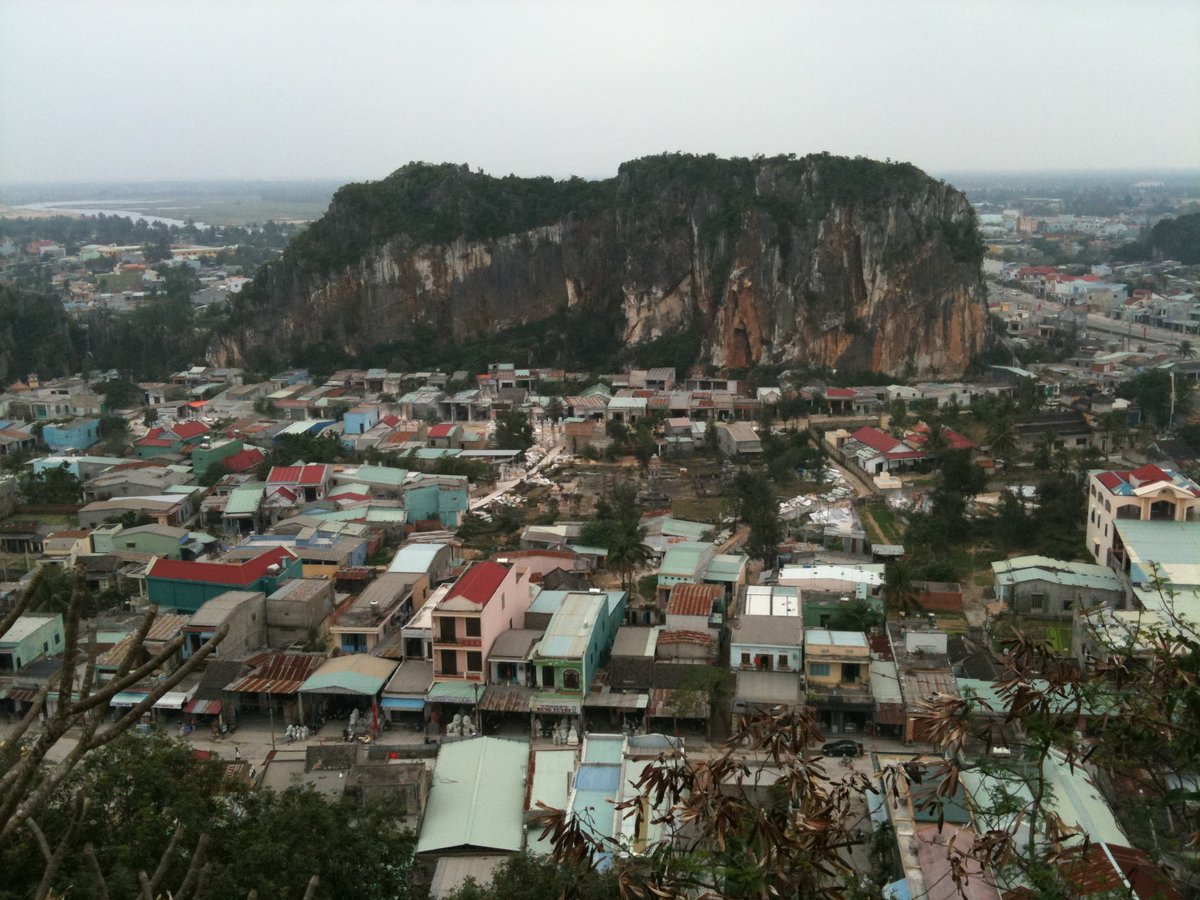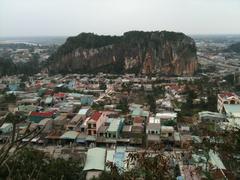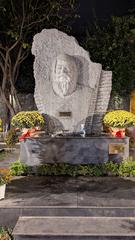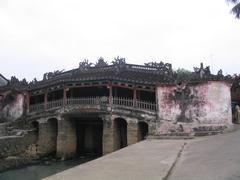
Comprehensive Guide to Visiting Ngũ Hành Sơn, Hội An, Vietnam
Date: 23/07/2024
Introduction
Ngũ Hành Sơn, also known as the Marble Mountains, is a captivating destination located in the Ngũ Hành Sơn District, just south of Da Nang, Vietnam. This cluster of five marble and limestone hills—named after the elements Kim (metal), Thuy (water), Moc (wood), Hoa (fire), and Tho (earth)—holds immense historical, cultural, and spiritual significance. According to local legend, these mountains were formed from the eggshells of a dragon, an enchanting myth that adds to their allure (Vietnam Online). The area has been a site of worship and pilgrimage for centuries, dating back to the Champa Kingdom, a Hindu civilization that ruled central and southern Vietnam from the 2nd to the 15th century (UNESCO).
During the 17th century, Vietnamese Buddhists began to establish their presence, constructing numerous pagodas and shrines that remain active places of worship today. The French colonial period also contributed to the site’s historical importance through archaeological excavations that unearthed valuable artifacts (Vietnam Heritage). In the modern era, Ngũ Hành Sơn has been officially recognized as a national heritage site, with ongoing preservation efforts to maintain its cultural and natural beauty (Vietnam Tourism).
For visitors, Ngũ Hành Sơn offers a rich tapestry of natural beauty, spiritual depth, and historical intrigue. Whether you are a history enthusiast, a nature lover, or a spiritual seeker, this guide provides comprehensive information on visiting hours, ticket prices, travel tips, and nearby attractions to ensure an enriching experience at this extraordinary site.
Table of Contents
- Introduction
- Historical Background
- Cultural and Religious Practices
- Visitor Information
- Special Events and Guided Tours
- Conservation Efforts
- FAQ Section
- Conclusion
Historical Background
Ancient Origins and Mythology
The name “Ngũ Hành Sơn” translates to “Five Elements Mountains,” each mountain named after one of the five elements - Kim (metal), Thuy (water), Moc (wood), Hoa (fire), and Tho (earth). According to local legend, the mountains were formed from the eggshells of a dragon, which laid its eggs on the coast. The eggs hatched, and the shells grew into the five mountains (Vietnam Online).
Historical Significance
Ngũ Hành Sơn has been a significant cultural and religious site for centuries. The mountains have been a place of worship and pilgrimage for Buddhists and Hindus alike. The earliest records of the mountains date back to the Champa Kingdom, which ruled central and southern Vietnam from approximately the 2nd century to the 15th century. The Champa people, who were of Hindu faith, built several temples and sanctuaries within the caves of the mountains (UNESCO).
Buddhist Influence
During the 17th century, Vietnamese Buddhists began to establish their presence in Ngũ Hành Sơn. The mountains became a center for Buddhist worship and meditation, with numerous pagodas and shrines constructed over the centuries. One of the most notable is the Tam Thai Pagoda, built in 1630 during the reign of the Nguyen Lords. This pagoda is considered one of the oldest and most significant Buddhist structures in the region (Vietnam Guide).
French Colonial Period
The French colonial period in Vietnam, which lasted from the mid-19th century until 1954, also left its mark on Ngũ Hành Sơn. The French were fascinated by the natural beauty and spiritual significance of the mountains. They undertook several archaeological studies and excavations, uncovering artifacts and relics from the Champa and early Vietnamese periods. These findings helped to further understand the historical and cultural importance of the site (Vietnam Heritage).
Modern Era and Preservation Efforts
In the modern era, Ngũ Hành Sơn has continued to be a site of religious and cultural importance. The Vietnamese government has recognized the mountains as a national heritage site, and efforts have been made to preserve and protect the area. In 1990, the site was officially designated as a historical and cultural relic by the Ministry of Culture, Sports, and Tourism of Vietnam (Vietnam Tourism).
Archaeological Discoveries
Recent archaeological discoveries have shed more light on the historical significance of Ngũ Hành Sơn. Excavations have revealed ancient artifacts, including pottery, tools, and religious relics, dating back to the Champa and early Vietnamese periods. These findings have provided valuable insights into the early history and cultural practices of the region (Vietnam Archaeology).
Cultural and Religious Practices
Ngũ Hành Sơn continues to be a vibrant center for cultural and religious activities. The mountains are home to numerous festivals and ceremonies throughout the year, attracting pilgrims and tourists from around the world. One of the most significant events is the annual Quan The Am Festival, held in honor of the Bodhisattva of Compassion. This festival features traditional music, dance, and religious rituals, highlighting the rich cultural heritage of the region (Vietnam Festivals).
Visitor Information
Ticket Prices
Admission to Ngũ Hành Sơn is reasonably priced, with tickets available for both adults and children. The entrance fee is approximately 40,000 VND ($1.70 USD) per person, with an additional fee of 15,000 VND ($0.65 USD) for the elevator to Thuy Son. Prices may vary depending on the time of year and any special events taking place. It is recommended to check the official website or contact local tourist information centers for the most up-to-date pricing.
Opening Hours
Ngũ Hành Sơn is generally open to visitors from early morning until late afternoon. Typical visiting hours are from 7:00 AM to 5:30 PM, although these times can vary slightly depending on the season and specific areas within the site. It is advisable to visit early in the day to avoid crowds and to fully enjoy the serene atmosphere.
Travel Tips
When visiting Ngũ Hành Sơn, it is recommended to wear comfortable walking shoes, as the terrain can be uneven and steep in places. Bringing water and sun protection is also advisable, especially during the hotter months. Guided tours are available and can provide valuable insights into the historical and cultural significance of the site.
Nearby Attractions
The Marble Mountains are conveniently located near several other attractions in Da Nang. Visitors can explore the nearby beaches, such as My Khe Beach, or visit the ancient town of Hội An, a UNESCO World Heritage site known for its well-preserved architecture and vibrant culture.
Accessibility
While some areas of Ngũ Hành Sơn are accessible to visitors with limited mobility, certain sections may be challenging due to steep steps and uneven surfaces. It is recommended to check accessibility options beforehand and to plan accordingly.
Special Events and Guided Tours
Annual Festivals
One of the most significant events at Ngũ Hành Sơn is the Quan The Am Festival, which celebrates the Bodhisattva of Compassion. This festival includes traditional music, dance, and religious rituals, attracting both locals and tourists.
Guided Tours
Guided tours are available and can enhance the visitor experience by providing detailed information about the history and significance of the site. These tours often include visits to key pagodas, caves, and viewpoints within the Marble Mountains.
Photographic Spots
Ngũ Hành Sơn offers numerous photographic opportunities, from panoramic views of the surrounding landscape to intricate details of the pagodas and caves. Some of the best spots for photography include the summit of Thuy Son and the entrance to Huyen Khong Cave.
Conservation Efforts
Challenges
Despite the efforts to preserve Ngũ Hành Sơn, the site faces several conservation challenges. The increasing number of tourists has put pressure on the natural environment and historical structures. Additionally, urban development in the surrounding areas poses a threat to the integrity of the site. The Vietnamese government, along with international organizations, is working to address these challenges through sustainable tourism practices and conservation initiatives (UNESCO).
Future Prospects
Looking ahead, the future of Ngũ Hành Sơn depends on continued efforts to balance tourism development with conservation. The site holds immense potential for educational and cultural tourism, offering visitors a unique opportunity to explore the rich history and spiritual heritage of Vietnam. By promoting sustainable practices and raising awareness about the importance of preservation, Ngũ Hành Sơn can continue to be a source of inspiration and cultural pride for future generations (Vietnam Tourism).
FAQ Section
Q: What are the visiting hours for Ngũ Hành Sơn? A: Ngũ Hành Sơn is generally open from 7:00 AM to 5:30 PM, although these times can vary slightly depending on the season.
Q: How much do tickets to Ngũ Hành Sơn cost? A: The entrance fee is approximately 40,000 VND ($1.70 USD) per person, with an additional fee of 15,000 VND ($0.65 USD) for the elevator to Thuy Son.
Q: Are guided tours available? A: Yes, guided tours are available and can provide valuable insights into the history and significance of the site.
Q: Is Ngũ Hành Sơn accessible to visitors with limited mobility? A: While some areas are accessible, certain sections may be challenging due to steep steps and uneven surfaces.
Conclusion
In summary, Ngũ Hành Sơn is a site of profound historical and cultural significance. From its ancient origins and religious importance to its role in modern tourism and conservation efforts, the mountains offer a unique glimpse into the rich heritage of Vietnam. Through continued preservation and sustainable tourism practices, Ngũ Hành Sơn can remain a cherished landmark for generations to come.
For more information on visiting Ngũ Hành Sơn and other historical sites in Da Nang, download the Audiala mobile app, check out our related posts, and follow us on social media for the latest updates.


